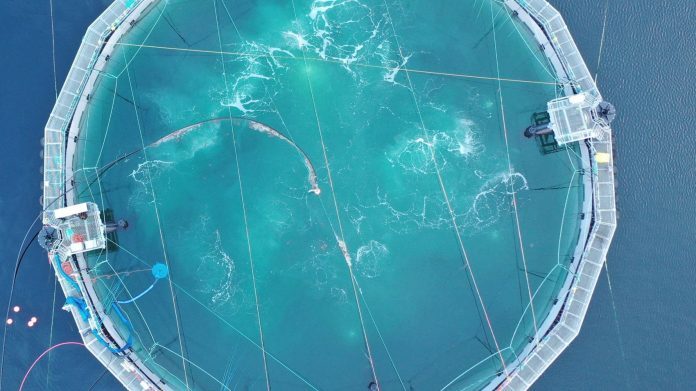Project underway with the successful stocking of smolts.
In a press release, Cermaq Canada writes that its Semi-Closed Containment System (SCCS) trial is underway at its Millar Channel farm site and it has been stocked with 495,000 smolts, approximately 100 grams in size.
The Mitsubishi-owned salmon farmer said that the goal of the pilot trial is to determine the feasibility of the system in Canadian waters, as well as analyse the performance of fish within the system as compared to control groups of fish which have been stocked in the adjacent, traditional pen system.
Cermaq Canada purchased the SCCS from the aquaculture service firm FiiZK.
“We are excited about the start of the trial for several reasons. The first is the potential benefits for salmon, as trials in Norway have shown us that the system essentially eliminates the transfer of lice from wild salmon to our farmed populations. We are also excited to see how the farmed populations perform in the system in Canadian waters. In Norway, we have seen our fish grow faster and have better overall performance,” said Cermaq Canada Managing Director David Kiemele.
“The system is moored at our Millar Channel farm site which is located in Ahousaht Nation territory, and we feel the weight of this responsibility. We are committed to ongoing improvements to our operations through opportunities just like this, including the testing of new technology and looking at how our fish interact with the environment around them,” he added.
“We know the system is performing well in Norwegian waters, but we need to see how it performs in Pacific waters. Our waters are different for several reasons – including differing biodiversity, warmer temperatures and varying biophysical properties. We also have different fish welfare concerns – many of which we are hopeful the system will help to mitigate. The system has been adapted to our local waters by using four deep-water intakes to draw water into the system from depths between 22 and 27 metres. The hope is that this will potentially eliminate harmful algae and sea lice from entering the system. Overall, this technology gives us a greater ability to control water quality within the system,” said Cermaq Canada Innovation Director and SCCS trial Project Director Brock Thomson.
“We are also investigating the feasibility of using this technology as smolt entry sites – or nurseries. We know that the transition from the freshwater environment to our ocean farms can be stressful for fish, and that smaller fish can be more susceptible to naturally occurring environmental challenges in the ocean environment. By using the SCCS as an entry site, we may be able to reduce stress and minimize exposure for smolts, helping to improve overall fish performance and welfare,” he added.
The trial will run until the summer of 2022, when fish are harvested from the site. During this trial period, there will be the initial group of control fish who will spend their life in the traditional farm system. Cermaq Canada will also be transferring fish from the SCCS at two pre-determined growth targets into the adjacent traditional net-pen system to test performance and influence of the system.

